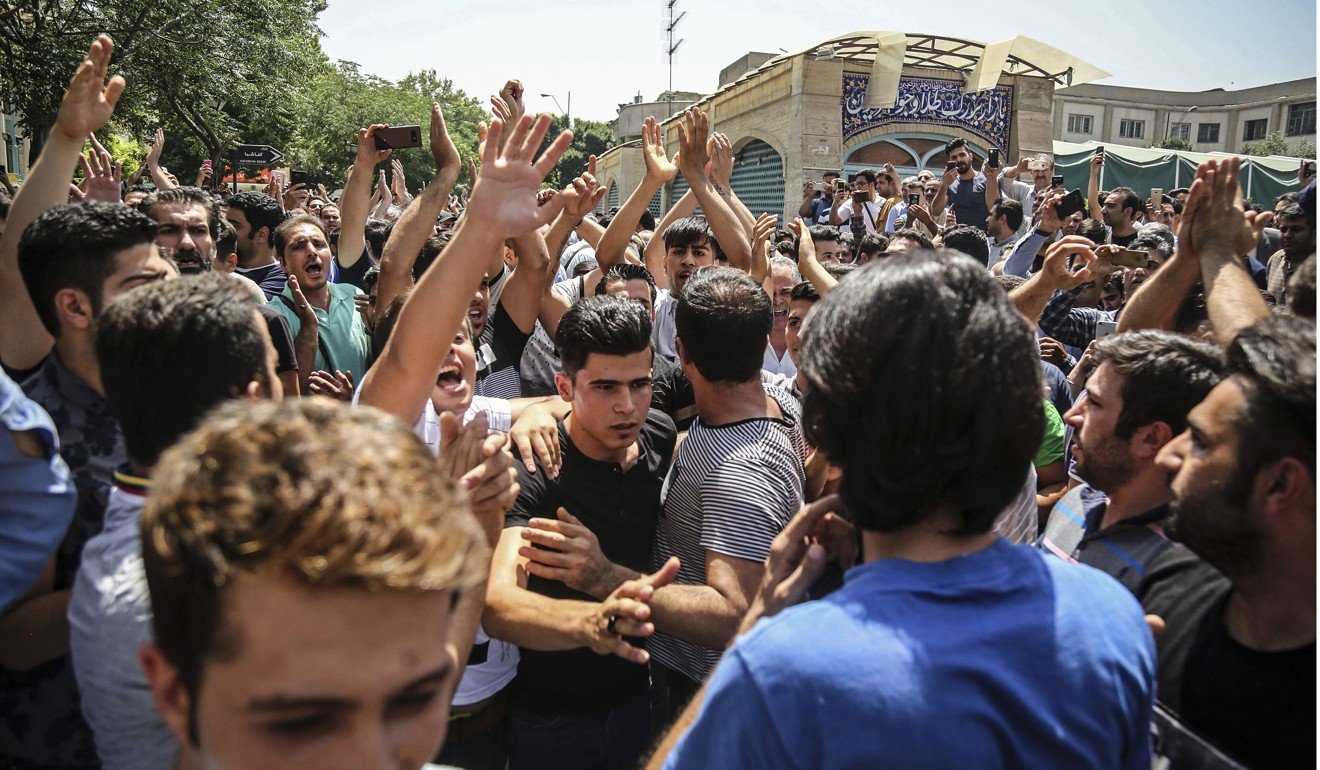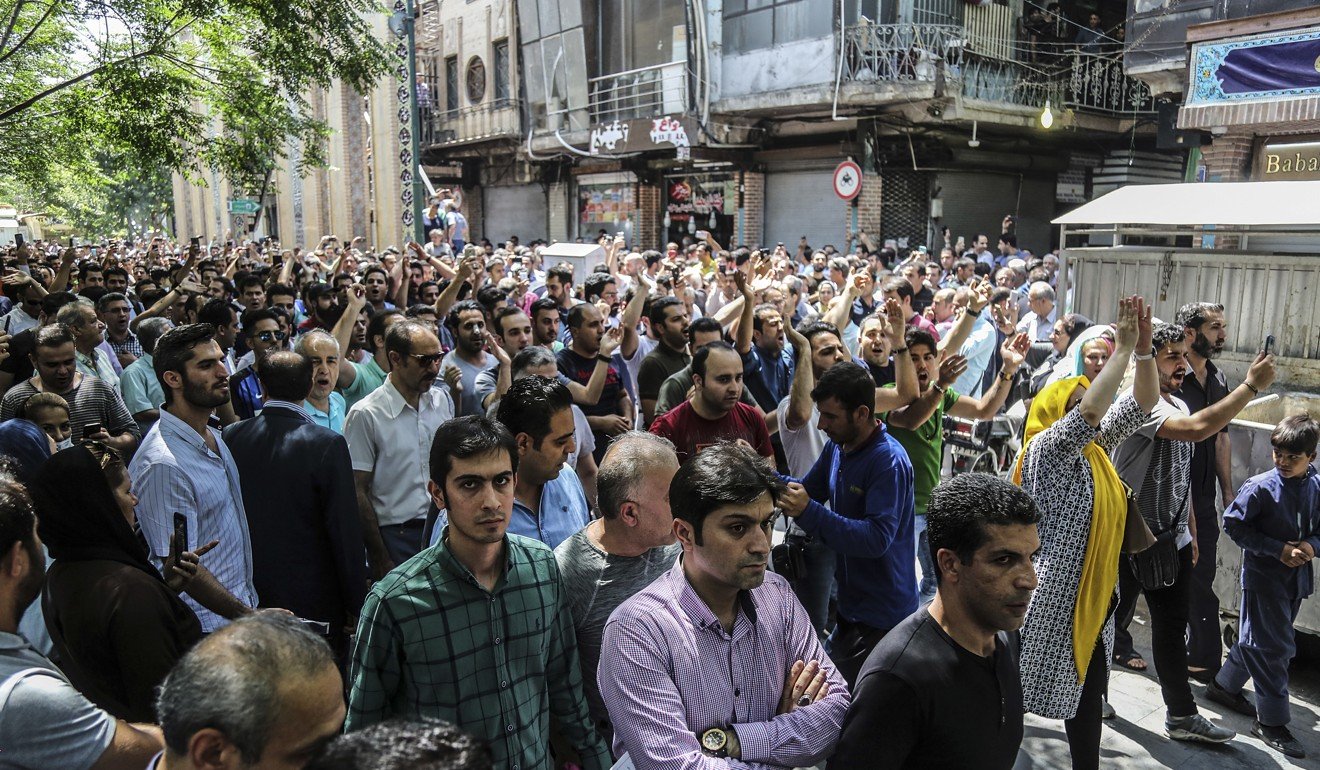
Protesters swarm Iran’s Grand Bazaar in Tehran as anger over economy increases
Seemingly spontaneous action believed to have been sparked by the poor economy and high unemployment
Protesters in the Iranian capital swarmed into its historic Grand Bazaar on Monday, news agencies reported, and forced shopkeepers to close their stalls in apparent anger over the Islamic Republic’s troubled economy, months after similar demonstrations rocked the country.
The seemingly unplanned action came a day after protests forced two major shopping centres for mobile phones and electronics to close in Tehran. It also signalled widespread unease in the wake of President Donald Trump’s decision to withdraw America from Tehran’s nuclear deal with world powers.

It wasn’t clear who led the protests. Iran’s semi-official news agencies Fars, ISNA and Tasnim described them as erupting after the Iranian rial dropped to 90,000 to the dollar on the country’s black market, despite government attempts to control the currency.
Videos posted on social media showed protesters at the bazaar heckling shopkeepers who refused to close, shouting in Farsi: “Coward!”
The head of Iran’s Chamber of Guilds, Ali Fazeli, was later quoted by Tasnim as saying the situation at the bazaar is calm.

“Their demands are delivered through the chamber to the government, and these are being pursued by us,” he said.
Tehran’s sprawling Grand Bazaar has long been a centre of conservatism in Iranian politics and remains an economic force within the country – despite the construction of massive shopping centres around the city. Bazaar families opposed the Iranian Shah Mohammad Reza Pahlavi and supported the 1979 Islamic Revolution that saw him replaced by the Shiite theocracy and elected officials.
At the end of last year, similar economic protests roiled Iran and spread to some 75 cities and towns, becoming the largest demonstrations in the country since its 2009 disputed presidential election. The protests in late December and early January saw at least 25 people killed and nearly 5,000 arrested.

However, those protests largely struck Iran’s provinces and not Tehran. Analysts believe hardliners probably encouraged the first protest in Mashhad to weaken the administration of President Hassan Rowhani, a relative moderate cleric. The protests spiralled out of control, with people openly criticising Rowhani and Supreme Leader Ayatollah Ali Khamenei.
Rowhani’s government has struggled with economic problems, which have seen high unemployment. A government-set exchange rate of 42,000 rials to US$1 has quickly been surpassed in the black market. On Monday, state television quoted Iranian Central Bank chief Valiollah Seif as saying the government plans to create a parallel market next week to combat the black market.

